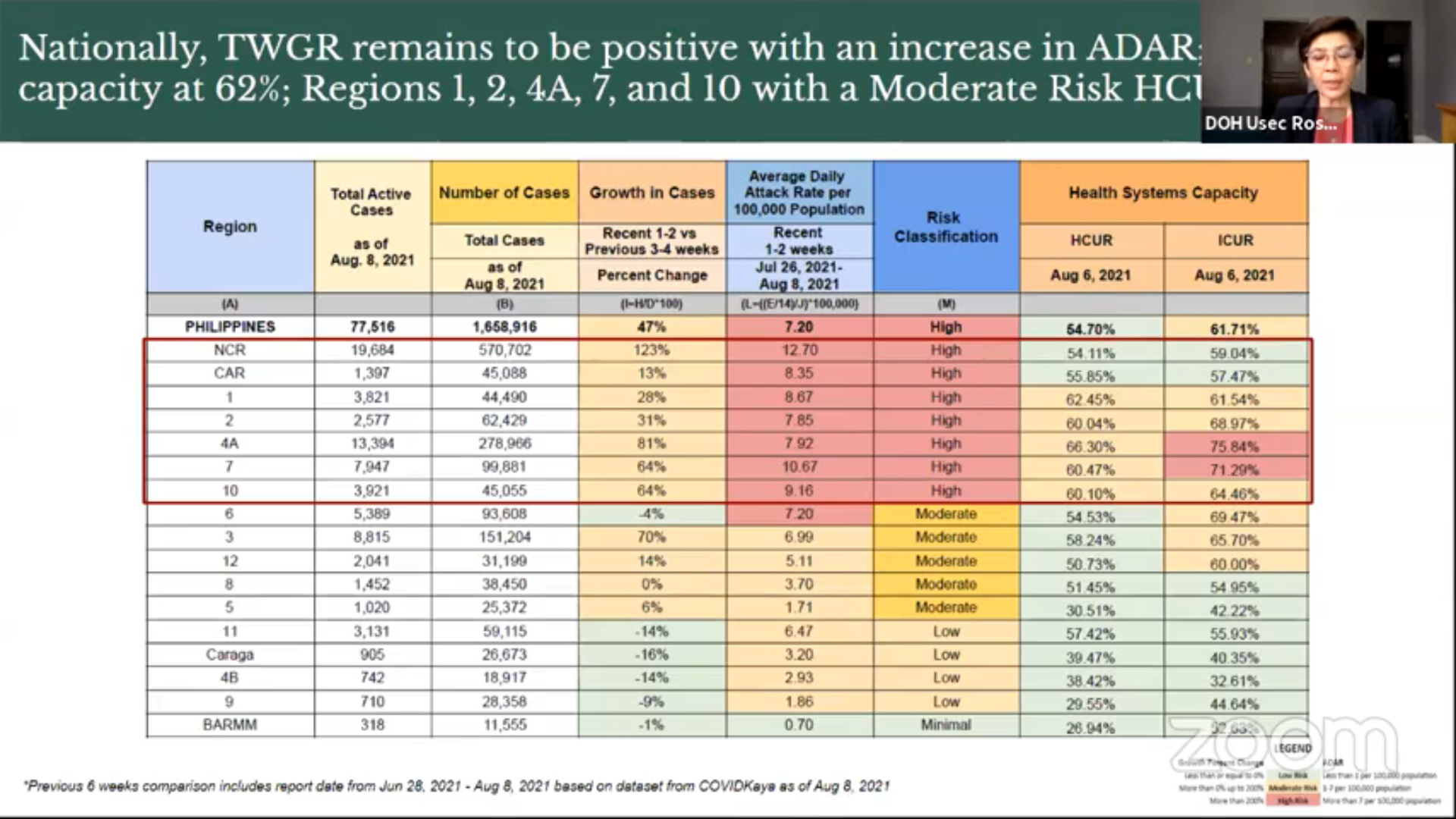The Philippines is back to high risk classification for COVID-19 cases amid increasing average daily attack rate (ADAR) and positive two-week growth rate (2WGR), the Department of Health (DOH) reported.
The national 2WGR, or the percentage change from the cases one to two weeks ago compared to the cases three to four weeks ago, reached 47%.
The ADAR, which identifies the extent of infection in a certain population, also increased to 7.20 for every 100,000 population from July 26 to August 8.

The national daily average case toll from Aug. 2 to 8 was around over 8,800, which is higher than the over 7,000 cases last week. The country has 78,480 cases as of today (Aug 9).
The DOH said Delta cases have been detected in 13 of the 17 regions in the country, including the National Capital Region (NCR) with all its cities and municipalities detecting the said variant.
Currently placed under Alert Level 4 are Malabon, Valenzuela, Pateros, Taguig, Quezon City, Marikina, Makati, San Juan, Las Piñas, and Muntinlupa. This means they have been classified as moderate to critical risk, with a healthcare utilization rate higher than 70%.
The remaining areas of Metro Manila are under Alert Level 3, or their COVID-19 case count is high and increasing, while their bed utilization is over 50%.
DOH USec. Maria Rosario Vergeire said in a briefing today that Pateros, Malabon, and Navotas are at critical risk, “having high risk two-week growth rate and average daily attack rate.”
“Apart from these areas, 12 areas have high risk average daily attack rates, these are Makati, San Juan, Pasay, Las Piñas, Muntinlupa, Parañaque, Valenzuela, Pasig, Mandaluyong, Taguig, Manila and Quezon City,” Vergeire said.
The DOH has recommended granular lockdowns, active case finding, and hospital capacity augmentation for areas under high alert levels.
Positivity rate up
The positivity rate or the rate of samples that tested positive from all samples collected, reached 20.3% of the 51,000 samples tested on August 6. This is the highest since April 10 this year.
Among the factors considered to the spike are increased mobility, contact rate, variants of concern, and reduced compliance with health protocols.
“If we can reach about more than 80 to 90,000 tests per day, mas magiging makabuluhan at makikita natin ‘yung complete picture nung mga nagkakasakit dito sa ating bansa. And the response is towards that direction,” Vergeire said.
Hospital occupancy up
Vergeire said the nationwide healthcare utilization rate (HCUR) is at 56%, but 236 facilities nationwide are already at critical level with at least 85% utilization rate.
Out of the over 200 hospitals in the country at critical level, 25 are in Metro Manila.
“With the current trends, ICU [intensive care unit] occupancy will be above 70% in two weeks, while COVID-19 hospital bed occupancy will be above 70% in three weeks,” the OCTA Research Group said.
Vergeire said there is a possibility of cases to continue increasing even after the enhanced community quarantine (ECQ) period.
“That’s why we are preparing our system, our local governments, and also doing mobility restrictions is for us to delay the further rise in the number of cases so that we will have more time to capacitate our systems,” she said.
The DOH said the increase is from 14 days ago, noting the incubation period of the virus. – Report from Mark Fetalco/AG-rir
Watch full report here:
